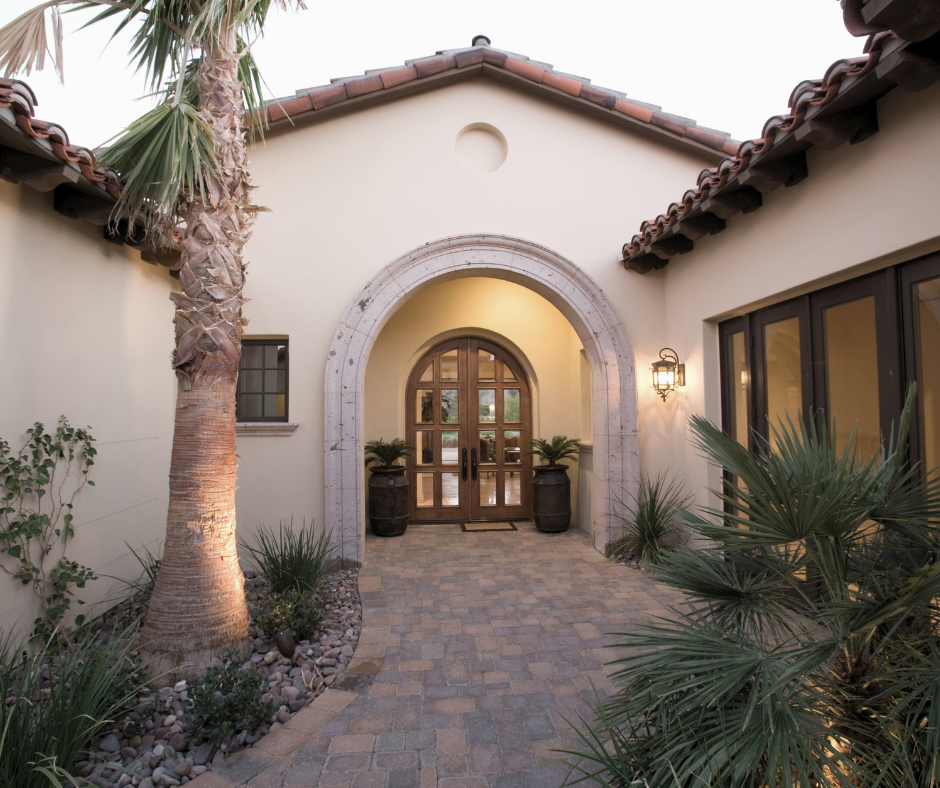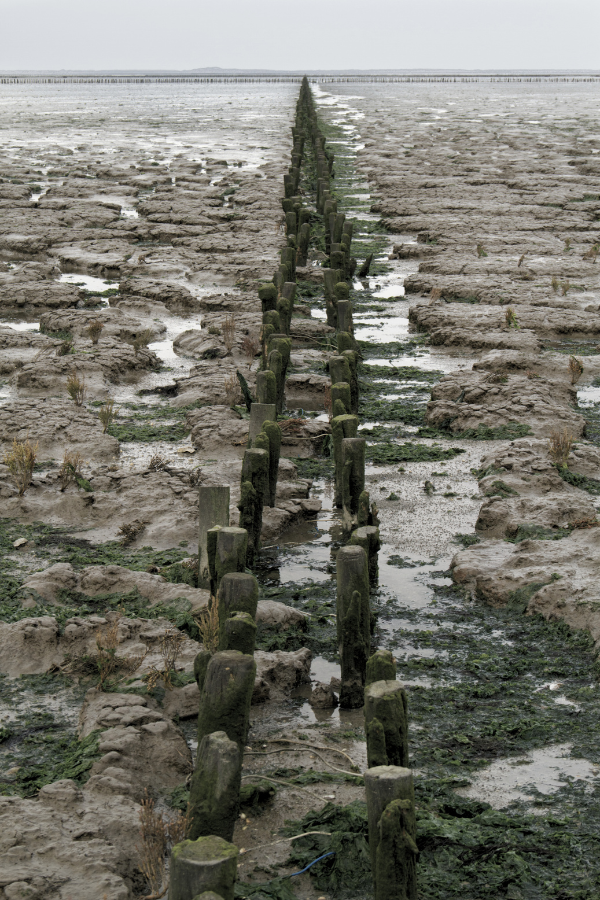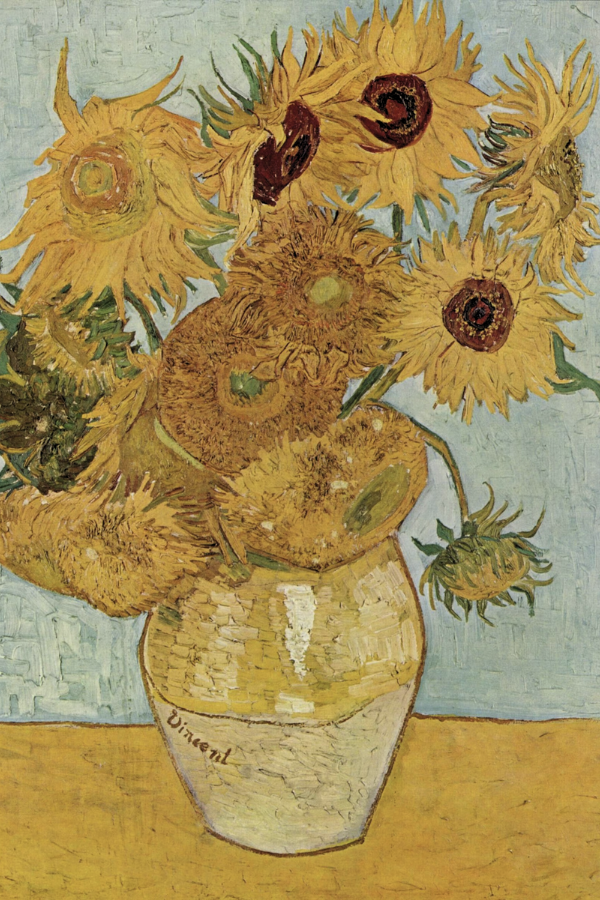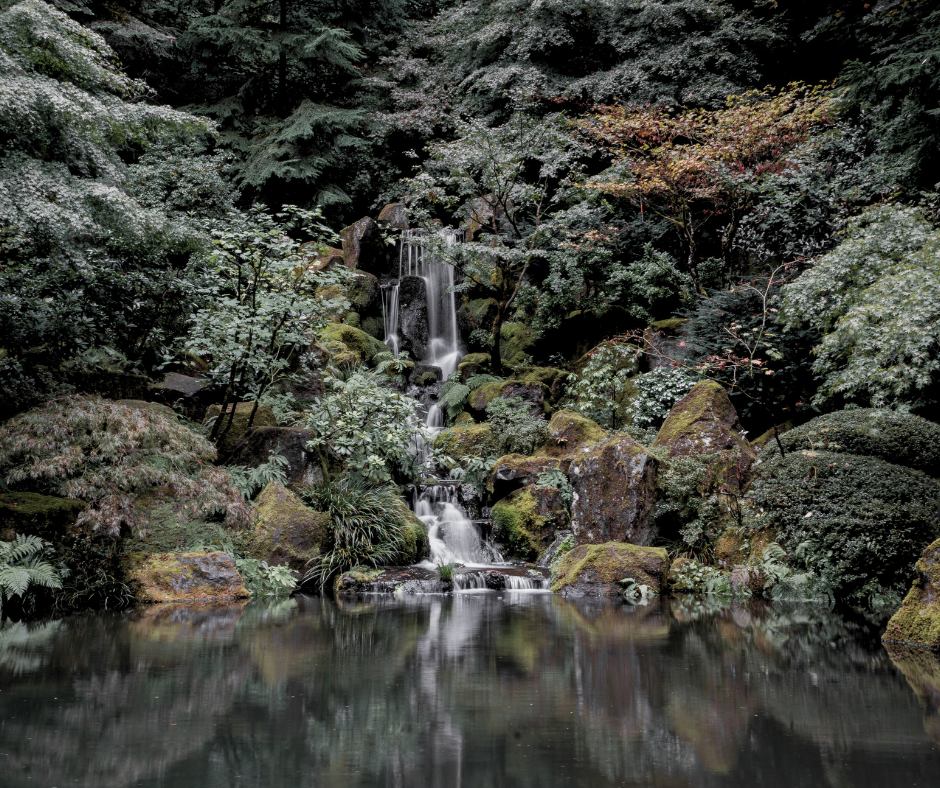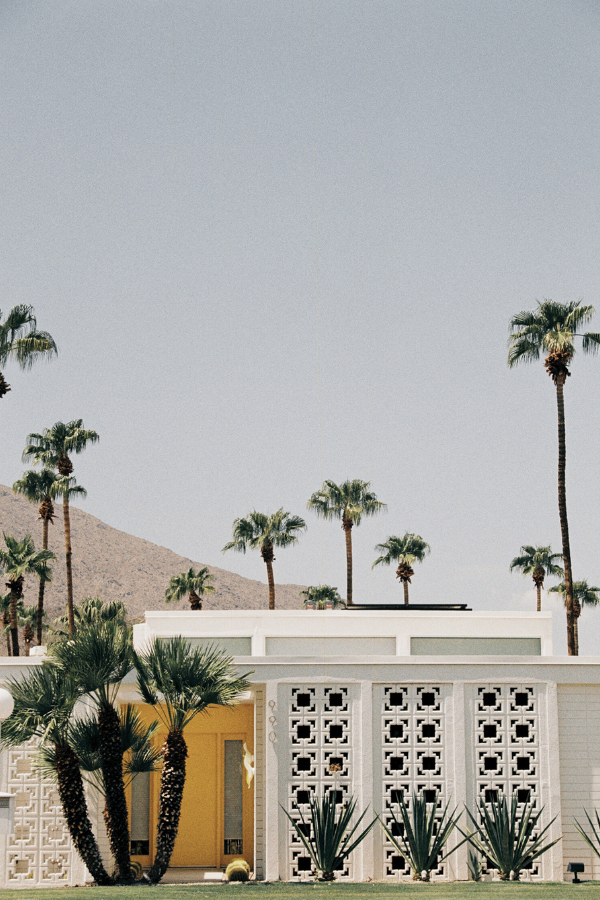
A Brief History of Palm Springs Mid Century Modernism
Summary
Palm Springs is at the center of US Mid Century Modernism—characterized by its integration of indoor-outdoor spaces, clean lines, and functional design. Palm Springs Mid-Century Modernism flourished from the late 1940s to the 1960s,—influenced by post-war prosperity and technological advancements. Iconic architects like Richard Neutra and John Lautner used the desert landscape to accentuate their designs—creating homes that blended seamlessly with their surroundings.
Reflection Questions
- How do the architectural principles of Mid Century Modernism reflect the cultural and economic conditions of post-war America?
- In what ways does the design of Mid Century Modern structures in Palm Springs enhance or take advantage of the natural desert environment?
- Considering the resurgence of interest in Mid Century Modernism, what lessons can contemporary architects take from this movement to apply in today’s architectural designs?
Journal Prompt
Reflect on your own living space or a building in your community that embodies Mid Century Modern characteristics. Consider the elements such as integration with nature, use of glass, flat planes, and open spaces. How do these features influence the way you feel in or perceive that space? Write about how modernist principles might be applied or are already influencing modern architecture in your own environment.
Characterized by clean lines, functional forms, and an integration with nature, mid-century modernism blossomed from the early 1930s to the late 1960s—capturing the essence of post-war optimism and the desire for a renewed sense of simplicity. While this movement left an indelible mark on cities and towns around the world, there’s one oasis in the California desert where its legacy shines particularly bright: Palm Springs.
Palm Springs—with its picturesque landscapes and warm climate—became a haven for visionaries of this architectural era. These architects and designers—drawn to the city’s potential and allure—transformed it into a veritable playground of mid-century modern design. From private residences to public buildings, Palm Springs architecture of this period blended the indoors with the outdoors—all while paying homage to the desert’s unique charm. The symbiosis between this architectural style and Palm Springs isn’t just serendipity. It’s a testament to how context can shape and amplify an aesthetic movement.
In this article, we explore the intertwining histories of mid-century modernism and Palm Springs—unraveling the stories, personalities, and designs that make this desert city a modernist mecca. We also tease next year’s Palm Springs Modernism Show—which includes compelling and informative talks, double-decker bus tours of historic neighborhoods, and so much more.
The Rise of Mid-Century Modernism: Key Influences
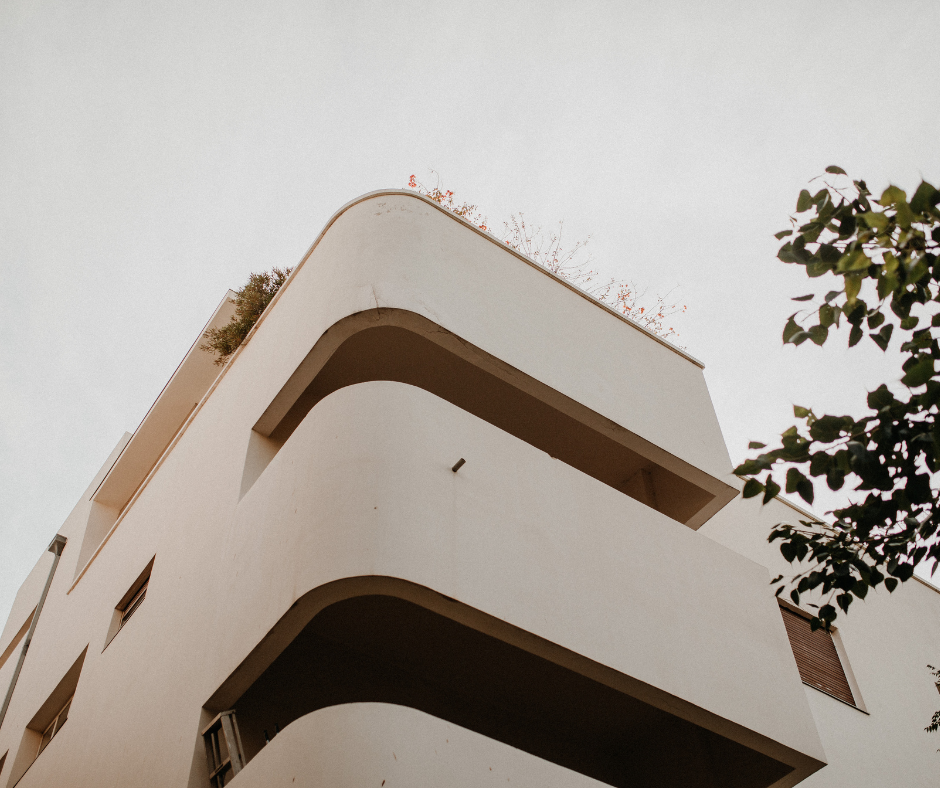
The rise of midcentury modern architecture can be attributed to several concurrent factors. Post-World War II, the United States experienced a significant economic upswing—fostering an environment conducive to the realization of the American Dream. This period—characterized by increased home ownership and suburban expansion—necessitated novel architectural designs that resonated with the values and aspirations of a burgeoning middle class.
Concurrently, the influence of the International Style—with its emphasis on simplicity, functionality, and a rejection of superfluous ornament—permeated American architectural thought. This was further augmented by the principles of the Bauhaus—which promoted the synthesis of art, design, and technology.
The availability of new building materials and advancements in construction technology during this period allowed architects to actualize these design ideals—resulting in the distinctive aesthetic and structural elements emblematic of mid-century modernism.
Setting the Stage in Palm Springs
In the early 20th century, Palm Springs’ architectural landscape was primarily influenced by Spanish Revival and Mediterranean styles. This architectural direction can be attributed to California’s colonial history and its proximity to Mexico—combined with a broader American fascination with the romanticized notions of Spanish colonial life.
Structures from this period typically featured stucco walls, red-tiled roofs, decorative tiles, and arched doorways. The use of courtyards and shaded arcades was not merely aesthetic. They offered practical solutions to the desert climate, providing cooler outdoor spaces.
Concurrently, Palm Springs began to gain recognition for its unique geographical attributes. Located in the Coachella Valley, it offered a dry desert climate with a significant number of clear days annually—making it attractive for health, leisure, and—subsequently—architectural experimentation. It was not until the 1940s that Modernism truly took hold in Palm Springs.
Moving Into Modernism: Palm Springs Plays Its Part
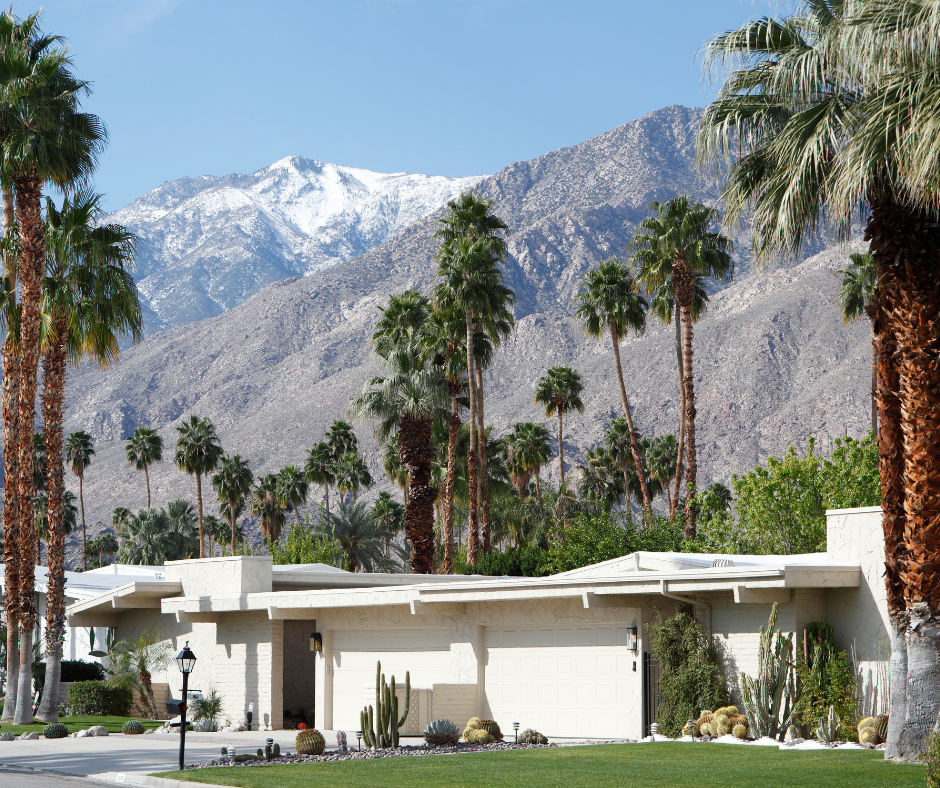
Modernism—specifically mid-century modernism—began to take hold in Palm Springs primarily in the post-World War II era—around the late 1940s and into the 1950s. The combination of the city’s growing popularity as a vacation destination for Hollywood celebrities and the economic prosperity following the war created an environment ripe for architectural innovation. Palm Springs “sprung” up in part due to Hollywood’s ‘two-hour rule’. Contractually, actors had to live within two hours of studios. The availability of land, the appealing climate, and the desire for modern, forward-looking designs led many influential architects of the time to leave their mark on Palm Springs.
Many architects and builders saw Palm Springs as an ideal locale to experiment with new materials and construction techniques—which led to the rise of residential and commercial buildings boasting the clean lines, flat planes, and indoor-outdoor living spaces characteristic of midcentury modern architecture. This period of architectural growth continued well into the 1960s—solidifying Palm Springs’ reputation as a hub for mid-century modern architecture.
Iconic Architects & Their Signature Designs
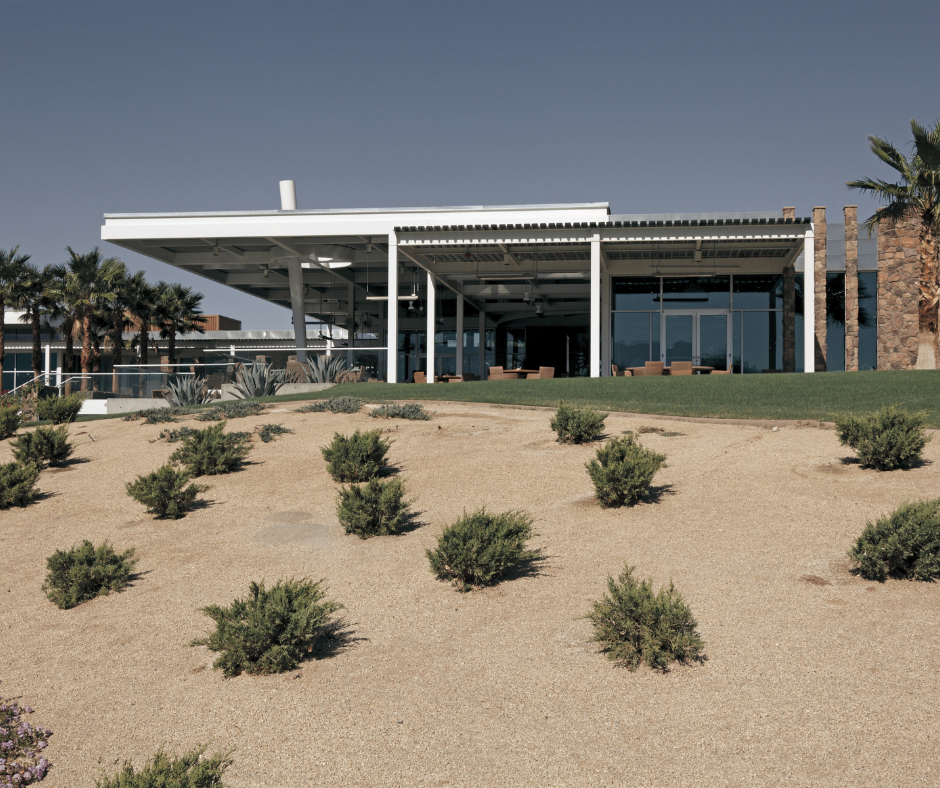
Palm Springs was the home—or vacation destination—of many iconic mid century modern architects. These include Richard Neutra, Donald Wexler, William F. Cody, and more. Let’s take a closer look at their contributions to Palm Springs’ mid century architecture.
Richard Neutra: Kaufmann Desert House
Richard Neutra—an Austrian-American architect—was instrumental in introducing the International Style to the American architectural scene. Known for his emphasis on integrating buildings with their environments, Neutra designed the Kaufmann Desert House in Palm Springs in 1946.
This iconic residence—commissioned by department store magnate Edgar J. Kaufmann—is celebrated for its clean lines, open floor plans, and large sliding glass doors that seamlessly blend the interior with the desert landscape. It stands as a hallmark of Neutra’s dedication to creating human-centric designs that connect inhabitants with the natural world. The Kaufmann Desert House is an iconic example of how this period transformed residential architecture for modern living.
John Lautner: Elrod House
John Lautner—a disciple of the great Frank Lloyd Wright—was known for his innovative and sometimes futuristic designs. In Palm Springs, Lautner’s masterpiece is the Elrod House—completed in 1968 at the tail end of the mid-century.
Perched on the south ridge of Palm Springs’ Mount San Jacinto, the house is renowned for its distinctive domed concrete roof and open-concept living area—which incorporates a boulder from the mountainside. The Elrod House exemplifies Lautner’s philosophy of organic architecture—emphasizing a harmony between the structure and its surrounding environment.
Albert Frey: Frey House II
Albert Frey—a Swiss-born architect—played a pivotal role in bringing European modernist ideas to the United States—particularly to Palm Springs. His most personal work—Frey House II— was completed in 1964. It too is nestled into the rocky Palm Springs hillside.
The design of the house—with its sharp angles, use of industrial materials, and integration with the rocky terrain (literally built around large boulders)—epitomizes Frey’s belief in a harmonious relationship between architecture and the natural world. This makes it a standout example of desert modernism.
Stewart Williams: Edris House
Stewart Williams—a local Palm Springs architect—was known for his ability to merge modernist principles with a sense of warmth and organic materiality. The Edris House—built in 1954—stands as a testament to this.
With its natural stone walls, post-and-beam construction, and expansive use of glass, the house appears to both emerge from and blend into its desert surroundings. Williams’ talent lay in crafting structures that—while modern—still exuded a timeless quality that resonated with the desert environment.
William Krisel: Twin Palms Estates
William Krisel brought a unique blend of modernist design and mass production to Palm Springs. His Twin Palms Estates—developed in the late 1950s—demonstrated this balance. While each home had a similar structural footprint, Krisel introduced variations in rooflines, colors, and landscaping to give each of these modernist houses its own identity. This approach made modernist design accessible and affordable to a broader segment of the population—underscoring Krisel’s impact on the suburban landscape of Palm Springs.
Landmark Developments & Neighborhoods
Sunrise Park: Influence on Suburban Design
Sunrise Park, situated in central Palm Springs, serves as a quintessential example of mid-century suburban design. Emerging in the post-World War II era, this neighborhood encapsulates the defining characteristics of the period’s residential architecture: clean lines, open floor plans, and expansive glass facades that invite the desert landscape inside.
Fuel your creative fire & be a part of a supportive community that values how you love to live.
subscribe to our newsletter
*please check your Spam folder for the latest DesignDash Magazine
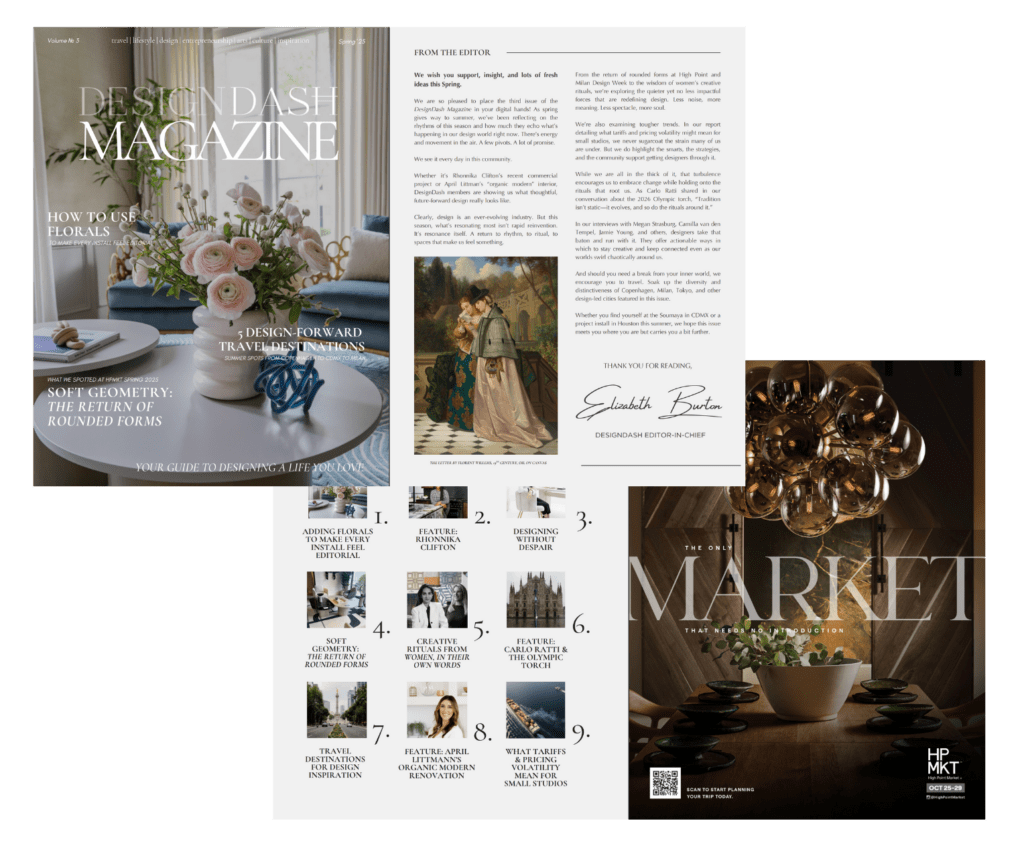
But more than its aesthetic appeal, Sunrise Park played a role in defining the layout and philosophy of suburban developments. With a mix of both custom and tract homes, it presented a balanced tapestry of individuality and community cohesion.
The neighborhood’s design—with its emphasis on space, privacy, and connection to nature—set precedents for future suburban developments in the region.
Vista Las Palmas: Celebrity Homes and the Allure for Hollywood
Vista Las Palmas stands as one of Palm Springs’ most storied neighborhoods—primarily because of its strong connection to Hollywood’s Golden Age. Throughout the 1950s and 60s, the area attracted a litany of celebrities—earning it the moniker “Beverly Hills of Palm Springs.”
Notable figures such as Elvis Presley, Dean Martin, and Joan Collins were drawn to Vista Las Palmas—seeking refuge from the bustle of Los Angeles. The homes here—many designed by renowned architects like William Krisel—epitomized luxury and modernist elegance.
Their presence—combined with the allure of Hollywood glamour—solidified Vista Las Palmas’ reputation as a nexus of style, luxury, and celebrity.
Twin Palms: Mass-Produced Modernism
Twin Palms—not to be confused with the aforementioned Twin Palms Estates designed by William Krisel—is a distinctive neighborhood in Palm Springs that signifies a key shift in mid-century architectural approach. It represents an era where modernism was democratized through mass production.
Here, homes were constructed using standardized plans—allowing for rapid development without compromising on the fundamental principles of modernist design. This approach made the aesthetics and function of modernism accessible to a wider demographic.
The name “Twin Palms” is derived from the two palm trees that were initially planted on each lot—adding a touch of uniformity and desert charm to the entire neighborhood.
Fuel your creative fire, thrive with support from peers, & make 2025 your firm’s best year yet!
JOIN THE DESIGNDASH COMMUNITY

Racquet Club Estates: Affordability Meets Design
Racquet Club Estates stands as a testament to the marriage of affordability and exemplary design. Developed primarily in the late 1950s and early 60s, this neighborhood showcased the work of the Alexander Construction Company in collaboration with architect William Krisel.
Together, they pioneered a model where stylish, modernist homes could be offered at price points attainable for the average American family. The homes—characterized by their butterfly roofs, post-and-beam construction, and open floor plans—were not just architecturally significant.
They symbolized a broader cultural movement where good design became a standard rather than a luxury.
Palm Springs Mid Century Modern Architecture Beyond Residences

The tenets of mid-century modernism weren’t confined solely to residential designs. They profoundly impacted commercial architecture as well. Banks, offices, and retail spaces began adopting the style’s hallmark characteristics—including clean lines, expansive windows, and the use of innovative materials.
Buildings were designed with a dual focus on aesthetic appeal and functional efficiency. Notably, banks discarded their traditionally imposing facades in favor of more transparent and welcoming designs—signaling a shift in how institutions wanted to present themselves to the public.
Offices prioritized open spaces—fostering collaboration and flexibility—while retail establishments emphasized visibility and indoor-outdoor flow—enhancing the shopping experience.
Public Spaces and Hospitality: Redefining Community and Leisure
Mid-century modernism’s influence extended to public and communal spaces—reshaping the way communities interacted and congregated. Schools adopted designs that promoted natural lighting and connectivity with the outdoors—enhancing learning environments.
Churches integrated modernist principles to create spaces that were both reverential and architecturally innovative. Parks and recreational areas became exercises in blending nature with man-made structures—encouraging public engagement.
In the hospitality sector, hotels and resorts underwent a transformation. They moved away from the opulent designs of the past—embracing simplicity, open layouts, and a keen emphasis on blending indoor and outdoor spaces.
This shift in design philosophy not only changed the aesthetic of Palm Springs’ hospitality industry but also redefined guests’ experiences—emphasizing relaxation, connection with the environment, and a sense of modern luxury.
Decline, Preservation, and Resurgence of Mid-Century Modernism
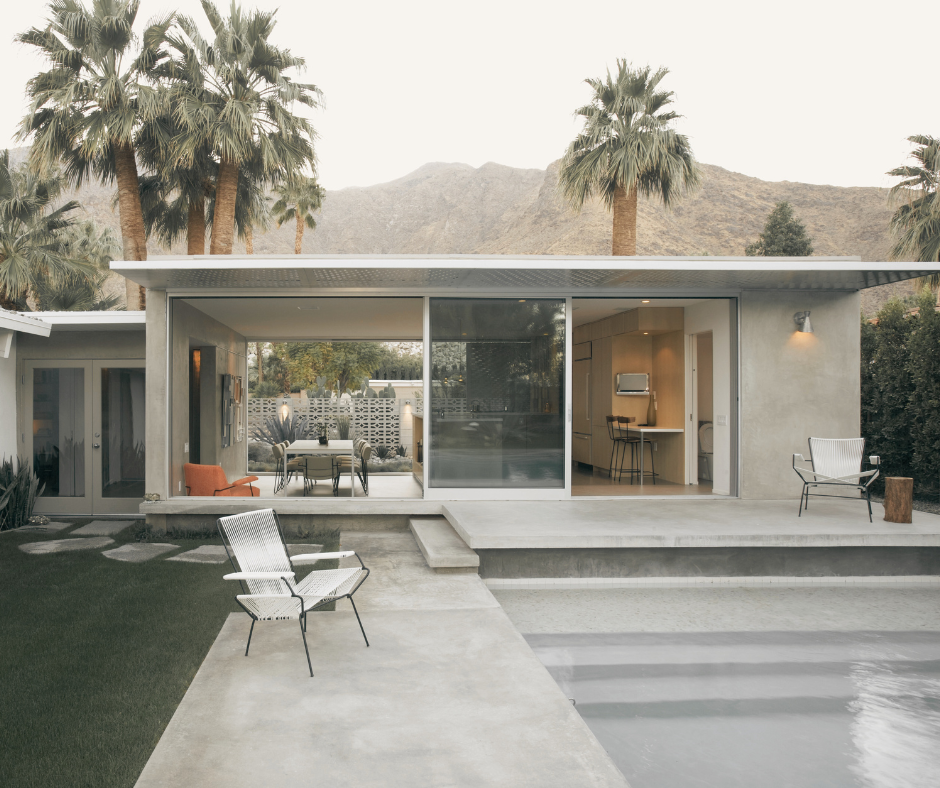
As the 20th century progressed, shifting aesthetic preferences, evolving architectural paradigms, and a growing inclination towards postmodernism marked a decline in the prominence of mid-century modernism. By the late 20th century, many iconic structures—once revered for their groundbreaking designs—faced neglect or demolition threats.
However, the tide began to turn as preservationists recognized the historical and cultural value embedded in these modernist marvels. Organizations—both local and national—championed efforts to restore and protect seminal works—emphasizing their enduring significance in the architectural tapestry.
Save the Date: Palm Springs Modernism Show 2024
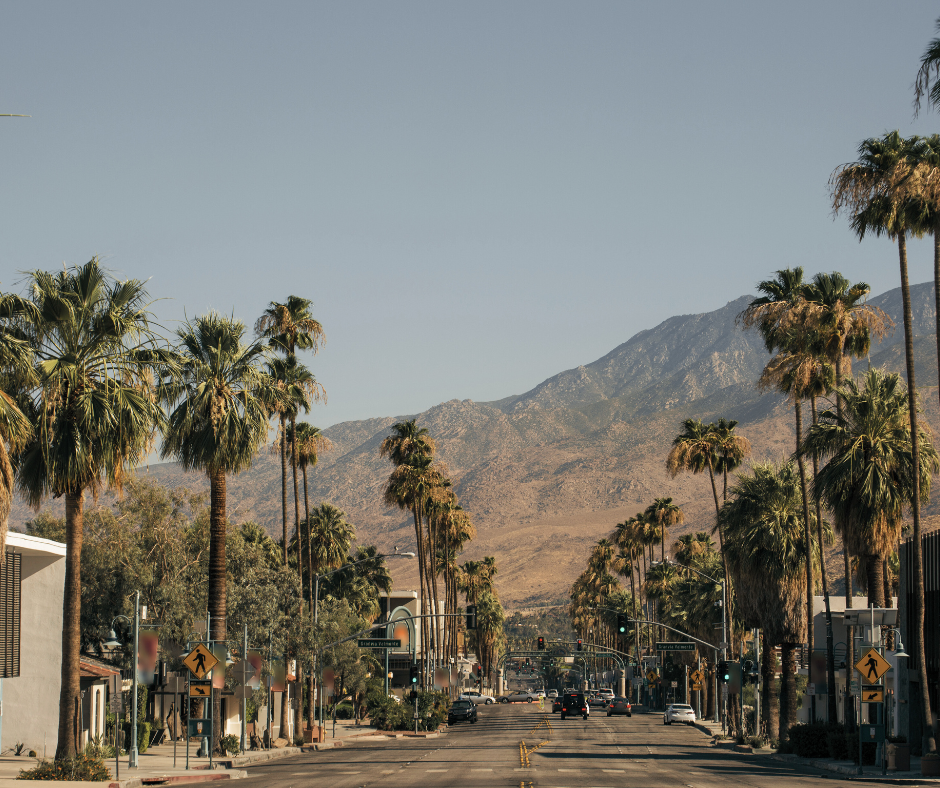
Spearheading this movement in Palm Springs was the establishment of events like Modernism Week—an annual celebration that showcases the city’s rich modernist heritage. This event—coupled with a broader resurgence in appreciation for mid-century aesthetics in the 21st century—has cemented Palm Springs as a bastion of modernist legacy.
It draws enthusiasts from around the world to revel in its architectural treasures. Attend Palm Springs Modernism Week in February 2024, and let us know what made an impression on you in the comments below.
When: 15 February through 24 February, 2024
Where: Modernism Week typically showcases various locations throughout Palm Springs—including iconic homes, commercial buildings, and other historic sites emblematic of the mid-century modern style. Given the city’s rich architectural heritage and its reputation as a hub for modernist design, Palm Springs provides the ideal backdrop for this event. Learn more here.
What: The event typically spans 10 days and offers a rich program of activities—including architectural tours, lectures, film screenings, and parties. Attendees get the chance to explore iconic mid-century modern structures, learn from experts in the field, and immerse themselves in the design aesthetics of the era. Enjoy tours presented by the Palm Springs Mod Squad—including their popular Signature Home Tour. Visitors to Palm Springs can also schedule their own tours. We recommend visiting the Historic Annenberg Estate, reserving garden tours, attending an exhibition at the Palm Springs Art Museum, and checking out other iconic homes on the National Register .
Written by the DesignDash Editorial Team
Our contributors include experienced designers, firm owners, design writers, and other industry professionals. If you’re interested in submitting your work or collaborating, please reach out to our Editor-in-Chief at editor@designdash.com.




